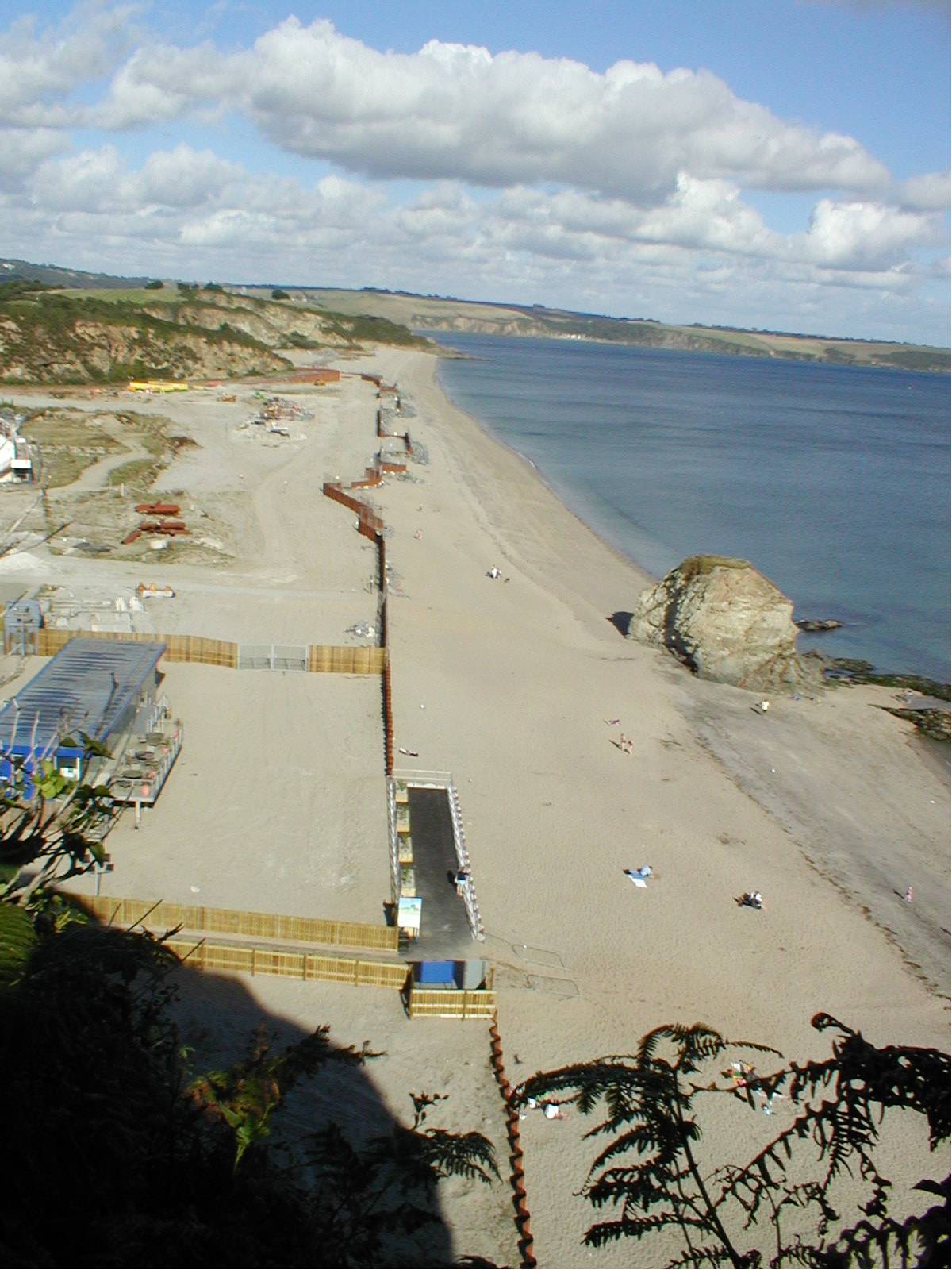





|
|
|
|
|
|

 |
 |
||||||||||||||||
|
|
|||||||||||||||||
|
|
||
 |
|
Carlyon Bay in August 2006 |
These pages will try to explain some of the environmental issues Carlyon Bay Watch believes surround the proposed development of 511 holiday apartments and a massive sea wall across two-thirds of the Carlyon Bay beaches.
Planning permission was granted for the development of apartments before there was a requirement for an Environmental Impact Assessment.
It was only when the developer applied for planning permission for an enhanced sea wall and beach replenishment scheme that such an assessment was carried out. That sea wall was turned down by the Secretary of State for Communities and Local Government following a public inquiry in November and December 2006 - a decision now being challenged by Ampersand in the courts. But Carlyon Bay Watch believes that the environmental impact of the so-called extant wall and the huge development behind it - already granted planning permission by Restormel Borough Council and which the developer claims will still be built even if they are not allowed to build their preferred option - will be immense.
We are appalled at the loss of habitat and destruction of the trees and shrubs on Shorthorn already caused by the work so far on the site. Many local people recall with pleasure walking through the area, having picnics and seeing many species of birds and insects.
The predictions of rising sea levels associated with climate change bring the issue of flooding , both at the development itself and in the general Par estuary area, very much to the fore. The ugly and illegal steel shuttering which is placed along the line of the eventual sea wall has already been breached and washed away in places during severe storms. The developer says it will use storm warning systems to make sure shutters are closed and people led to safety if necessary - but how accurate are storm warnings and how often will the site have to virtually shut down?
Under the developer's preferred sea defence scheme (refused after a public inquiry and now subject to appeal in the courts) the sea wall extends into the tidal zone and would be protected by a line of massive boulders at the foot of the wall covered by an extended beach in front of it. This beach of 'stent' would be carried there by lorry from an Imerys china clay quarry in the hills behind St Austell. A good idea, some might say, because it's finding a use for one of the waste products of the china clay industry. But the implications of this beach replenishment operation led the Government Inspector to one of his reasons for recommending the project be refused - it is unsustainable and it would be an unacceptable load on local roads. During the initial process of extending the beach hundreds of lorry loads a week would be going to (and from) the Carlyon Bay site. But this process would never really stop - because the natural forces of the sea would wash some of this 'stent' away from the beach. This means that in order to protect the sea wall and provide a beach for recreation, a "topping-up" operation would be needed. It isn't really known how often - after a major storm emergency measures may be needed. But even during normal years, several thousands of tonnes of stent may need to be replaced. This would be necessary for as long as the buildings are there and need defending - this is why the project is unsustainable and the Secretary of State agreed.
What would be the effects on the sea bed when this 'stent' is washed off the beach? The developer's environmental consultants say it wouldn't be washed out far enough to do any damage, but CBW's experts do not agree. The fine clay particles contained in the 'stent', which can form 'marine snow' has the potential to smother eelgrass beds which are known to exist in St Austell Bay and which are a UK Biodiversity Action Plan habitat.
For general enquiries email Carlyonbaywatch@aol.com
